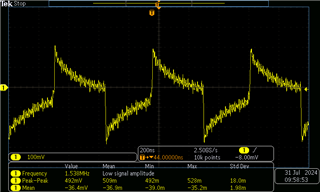Tool/software:
Hello,
I use TLV1812 as a window comparator.
Pin 2 of TL1812 in the schematic below is oscillating.
Oscillation occurs when the input voltage falls below the reference voltage of -22mV.
When the input voltage is below the reference voltage of +22mV, it does not oscillate.
Can you think of anything that might have caused it?





